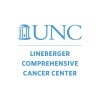
Phase I/II Study of Mitoxantrone, Etoposide and Gemtuzumab Ozogamicin for Acute Myeloid Leukemia...
Acute Myeloid LeukemiaThe purpose of this study is to investigate the combination of gemtuzumab ozogamicin, mitoxantrone and etoposide as second line therapy in patients with acute myeloid leukemia.

Panobinostat in Treating Patients With Relapsed or Refractory Acute Lymphoblastic Leukemia or Acute...
LeukemiaRATIONALE: Panobinostat may stop the growth of cancer cells by blocking some of the enzymes needed for cell growth. PURPOSE: This phase II trial is studying the side effects of panobinostat and to see how well it works in treating patients with relapsed or refractory acute lymphoblastic leukemia or acute myeloid leukemia.

Donor Umbilical Cord Blood Transplant in Treating Patients With Advanced Hematological Cancer or...
LeukemiaLymphoma3 moreRATIONALE: Giving low doses of chemotherapy and total-body irradiation before a donor umbilical cord blood transplant helps stop the growth of cancer or abnormal cells. It may also stop the patient's immune system from rejecting the donor's stem cells. The donated stem cells may replace the patient's immune cells and help destroy any remaining cancer cells (graft-versus-tumor effect). Sometimes the transplanted cells from a donor can also make an immune response against the body's normal cells. Giving cyclosporine and mycophenolate mofetil before and after transplant may stop this from happening. PURPOSE: This phase II trial is studying how well donor umbilical cord blood transplant with reduced intensity conditioning works in treating patients with advanced hematological cancer or other disease.

Vorinostat and Gemtuzumab Ozogamicin in Treating Older Patients With Previously Untreated Acute...
Adult Acute Megakaryoblastic Leukemia (M7)Adult Acute Minimally Differentiated Myeloid Leukemia (M0)13 moreRATIONALE: Vorinostat may stop the growth of cancer cells by interfering with various proteins needed for cell growth. Monoclonal antibodies, such as gemtuzumab ozogamicin (GO), can block cancer growth in different ways. GO finds cancer cells and helps kill them by carrying a cancer-killing substance to them. Giving vorinostat together with gemtuzumab ozogamicin may kill more cancer cells. PURPOSE: This phase II trial is studying how well giving vorinostat together with gemtuzumab ozogamicin works in treating older patients with previously untreated acute myeloid leukemia.

Donor Umbilical Cord Blood Transplant in Treating Patients With Hematologic Cancer
Chronic Myeloproliferative DisordersDiamond-blackfan Anemia7 moreRATIONALE: Giving chemotherapy and total-body irradiation before a donor umbilical cord blood transplant helps stop the growth of cancer and abnormal cells and helps stop the patient's immune system from rejecting the donor's stem cells. When the stem cells from a related or unrelated donor, that do not exactly match the patient's blood, are infused into the patient they may help the patient's bone marrow to make stem cells, red blood cells, white blood cells, and platelets. PURPOSE: This clinical trial is studying how well donor umbilical cord blood transplant works in treating patients with hematologic cancer.

Irradiated Donor Lymphocytes and Rituximab in Treating Patients With Relapsed or Refractory Lymphoproliferative...
LeukemiaLymphoma1 moreRATIONALE: When irradiated lymphocytes from a donor are infused into the patient they may help the patient's immune system kill cancer cells. Monoclonal antibodies, such as rituximab, can block cancer growth in different ways. Some block the ability of cancer cells to grow and spread. Others find cancer cells and help kill them or carry cancer-killing substances to them. Giving irradiated donor lymphocytes together with rituximab may kill more cancer cells. PURPOSE: This clinical trial is studying the side effects and how well giving irradiated donor lymphocytes together with rituximab works in treating patients with relapsed or refractory lymphoproliferative disease.

Study of Noscapine for Patients With Low Grade Non Hodgkin's Lymphoma or Chronic Lymphocytic Leukemia...
Non-Hodgkin's LymphomaChronic Lymphocytic LeukemiaThis study is for patients with non-hodgkin's lymphoma or chronic lymphocytic leukemia, which has failed to shrink or has returned after previous treatment with chemotherapy. The purpose of this study is to find out whether patients with these types of cancer will have their tumor shrunk after treatment with a drug called Noscapine. The second purpose is to see what are the side effects of this drug. This drug is being used as an over-the-counter cough suppressor in Europe and Japan, but has also shown to be effective against cancer.

Clofarabine and Gemtuzumab in Treating Patients With Relapsed or Refractory Acute Myeloid Leukemia...
LeukemiaRATIONALE: Drugs used in chemotherapy, such as clofarabine, work in different ways to stop the growth of cancer cells, either by killing the cells or by stopping them from dividing. Monoclonal antibodies, such as gemtuzumab, can block cancer growth in different ways. Some block the ability of cancer cells to grow and spread. Others find cancer cells and help kill them or carry cancer-killing substances to them. Giving clofarabine together with gemtuzumab may kill more cancer cells. PURPOSE: This phase I trial is studying the side effects and best dose of clofarabine when given together with gemtuzumab in treating patients with relapsed or refractory acute myeloid leukemia.

Allogeneic HCT Using Nonmyeloablative Host Conditioning With TLI & ATG vs SOC in AML
LeukemiaMyeloid2 moreAcute myeloid leukemia (AML) is a cancer of the bone marrow that mostly affects older adults. Even with the best chemotherapy, two-year disease-free survival is achieved in a minority of patients. Bone marrow transplantation from a sibling donor may improve cure rates; however, patients over 50 years of age have a high risk of complications and therefore generally are excluded from this treatment option. Recently our group developed a transplantation strategy for older cancer patients that protects against transplant-associated complications, yet does not interfere with the ability of the transplanted donor cells to destroy cancer cells. With this new method, we can now safely evaluate transplantation as a curative therapy for AML patients over the age of 50. We have assembled clinical and scientific researchers throughout the state of California to study and compare bone marrow transplantation using our new approach with the best standard of care chemotherapy in AML patients over the age of 50. The results of this study have the potential to establish a new treatment standard that will improve survival of older AML patients.

Reduced Intensity Preparative Regimen Followed by Stem Cell Transplant (FAB)
Myelodysplastic and Myeloproliferative DisordersAcute Myelogenous Leukemia6 moreBlood disorders such as leukemia or lymphoma or hemoglobinopathies can benefit from receiving an allogeneic (meaning that the cells are from a donor) stem cell transplant. Stem cells are created in the bone marrow. They grow into different types of blood cells that the body needs, including red blood cells, white blood cells, and platelets. In a transplant, the body's stem cells would be killed and then replaced by stem cells from the donor. Usually, patients are given very high doses of chemotherapy (drugs which kill cancer cells) prior to receiving a stem cell transplant. However, patients that are older, have received several prior treatments, or have other organ diseases are at a high risk of getting life-threatening treatment-related side effects from high doses of chemotherapy. Over the past several years, some doctors have begun to use lower doses of chemotherapy for preparing patients for a stem cell transplant. A condition that can occur after a stem cell transplant from a donor is Graft Versus Host Disease (GVHD). It is a rare but serious disorder that can strike persons whose immune system is suppressed and have received either a blood transfusion or a bone marrow transplant. Symptoms may include skin rash, intestinal problems similar to inflammation of the bowel and liver dysfunction. This research study uses a combination of lower-dose chemotherapy agents that is slightly different from those that have been used before. The medicines that will be used in this study are Fludarabine, Busulfan, both chemotherapy medicines, and Campath. Campath is a monoclonal antibody (a type of substance produced in the laboratory that binds to cancer cells). It helps the immune system see the cancer cell as something that needs to be destroyed. This research study will help us learn if using Fludarabine, Busulfan and Campath prior to an allogeneic stem cell transplant can provide treatment for blood disorders while decreasing the incidence of side effects.
